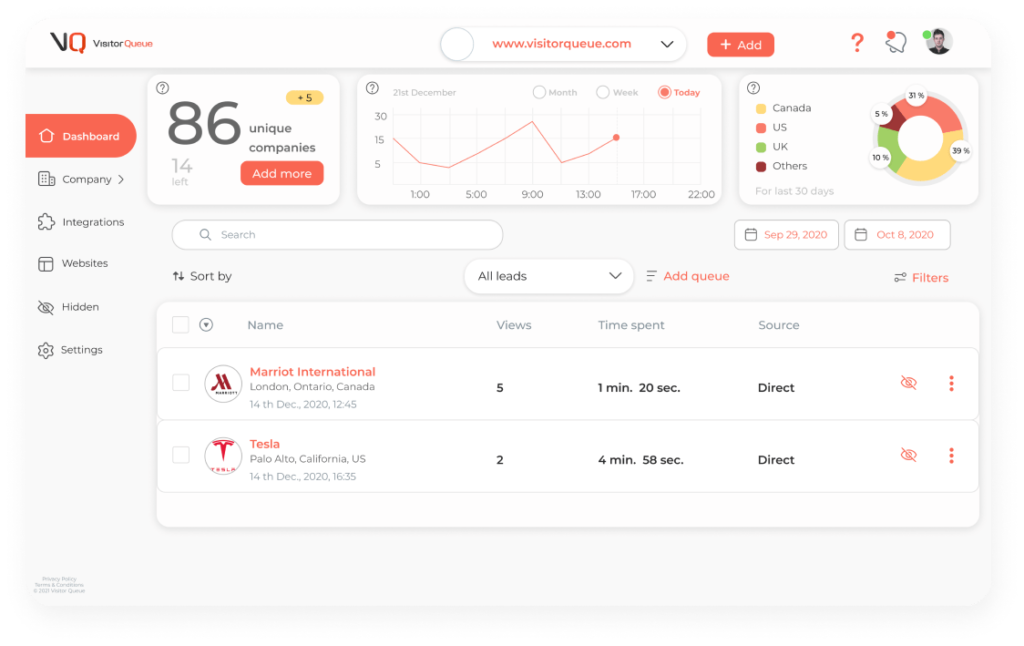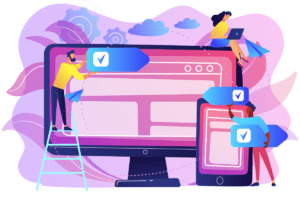Marketing has changed. It’s no longer just about capturing names and email addresses. It’s about sparking interest before a buyer even thinks about talking to sales. That’s where demand generation comes in. Demand generation is the process of creating awareness and interest in your product or service. It’s about helping prospects recognize a need and understand how you can solve it. In this article, we are going to talk about the top 10 ways that you can generate demand and interest. First, let’s define what demand generation even is.
What is Demand Generation?
Demand generation is the process of building interest in your product or service before a buyer is actively looking. It’s about getting on someone’s radar early by educating them, highlighting problems they may not have fully defined, and positioning your brand as a trusted resource. The goal isn’t to push a sale, it’s to spark curiosity, build credibility, and keep your company top of mind until the buyer is ready. After all, only about 5% of your audience is ready to buy at any given moment.
Demand Generation vs. Lead Generation
Demand generation and lead generation are related, but they serve different roles in the customer journey. Demand generation comes first, driving awareness and creates interest by offering value upfront. Lead generation comes later, capturing that interest through forms, gated content, or demos. Without demand generation, lead generation often falls flat because you’re asking someone to convert before they trust you or understand what you offer. You need both, but demand gen lays the groundwork that makes lead gen effective. Check out our article, Demand Generation vs Lead Generation: What Should You Focus On, to learn more about the difference between the two.

10 Demand Generation Strategies You Need to Use
Now that you know what demand generation is, let’s go over our list of the top 10 demand generation strategies that your company needs to be using.
1. Create Educational, Problem-Solving Content
Content marketing is one of the most effective demand generation strategies. But, it works better when it teaches rather than sells. Focus on producing content that answers real questions your audience is asking. Think less about promoting your product and more about addressing the pain points that your buyers are experiencing. For example, if you’re a B2B SaaS company, don’t write a blog post titled “10 Reasons to Use Our Platform.” Instead, write one that tackles a common challenge, like “Why Sales and Marketing Teams Struggle to Collaborate and How to Fix It.” This positions your brand as helpful, not pushy.
2. Host Webinars
Webinars allow you to share valuable insights, showcase thought leadership, and answer questions on the spot. They give your brand a face and a voice, which builds trust more quickly than static content. Make your webinars educational and topic-driven. Invite subject matter experts, use real examples, and keep them interactive. Don’t make it a product demo unless attendees know that going in. And be sure to follow up with a summary, replay, and additional resources to continue the conversation.
3. Use Social Media to Start Conversations
Too many companies treat social media like a billboard for what you offer. But, the real opportunity is in the conversations that you can have, not announcements. Instead of just posting company updates or blog links, use platforms like LinkedIn to share behind-the-scenes stories, customer challenges, lessons learned, or industry opinions. Ask questions. Respond to comments. Celebrate wins and reflect on failures. Social media is where people go to connect and learn. Show up consistently and bring value without always asking for something in return. Over time, people will associate your brand with helpfulness and insight.

4. Collaborate with Industry Voices
People trust people more than they trust brands. That’s why influencer and partner marketing is gaining traction in B2B. This doesn’t mean paying an influencer with a million followers. In fact, the best collaborations often come from micro-influencers, or people with 10,000 to 100,000 followers. This is because their content is generally more niche, so their followers are higher quality. Look for opportunities to co-create content, speak at virtual events, or run a podcast series with these voices. Their endorsement, even indirect, can introduce your brand to new audiences and build instant credibility.
5. Offer “Freemium” Options or Interactive Experiences
Sometimes the best way to generate interest is to let people experience value before they buy. Freemium models, free tools, calculators, templates, and self-assessments can all create real demand because they solve part of a problem. If your free offering is helpful enough, it becomes a gateway to your paid solution. For example, a marketing automation platform might offer a “Subject Line Grader” or a “Lead Score Calculator.” These tools provide a taste of what’s possible and position your brand as the expert that can take it even further.
6. Focus on SEO
When your website ranks for questions, challenges, or pain points that your audience is Googling, you can meet them exactly where they are in their journey. These searchers may not be ready to buy, but they’re actively learning. That’s your opportunity to be the helpful resource they come back to. Keep in mind that SEO is more than just keywords. It’s about creating genuinely useful, well-structured content that speaks directly to your audience’s intent. Start with the problems they’re trying to solve, not the features you’re trying to promote.

7. Thought Leadership Campaigns
Buyers want to work with companies that know what they’re doing, and can prove it. Thought leadership doesn’t happen overnight, but it’s worth investing in. That might mean publishing a thought-provoking LinkedIn post from your CEO, submitting articles to industry publications, or running a podcast series that challenges conventional thinking. The goal is to position your brand as a trusted authority. Not just someone with a product to sell, but someone with a point of view. When done right, thought leadership creates lasting mindshare and drives organic demand over time.
8. Content Repurposing
One piece of content can go a long way, if you use it strategically. A webinar can become a blog post, a blog post can become a series of LinkedIn snippets, and those snippets can be turned into a downloadable guide. Repurposing allows you to reach people across different channels and formats without starting from scratch every time. This keeps your message consistent and reinforces your expertise. It also helps you stay visible without overwhelming your team with content creation demands. And, can help with a full funnel marketing strategy.
9. Run Awareness Ads
While you may be thinking that paid ads are for lead generation, they can also be a great way to generate demand. The goal isn’t to get someone to fill out a form right away. Instead, use paid ads to promote your best content, raise awareness, and get in front of people who might not know you exist yet. Short videos, helpful guides, and industry insights work well here. Focus on engagement metrics like views, shares, time on page, rather than conversions. When the time is right, those viewers will come back with real intent.
10. Build a Community Around Your Brand
People are more likely to buy from brands they feel connected to. That’s why building community can be one of the most effective long-term demand generation strategies. This could take many forms, like an online forum, a private LinkedIn group, a monthly roundtable series, or even just consistent, authentic interaction in the comments section. The goal is to create a space where your audience can learn, ask questions, and support each other.
Well, What Now?
To get the most out of your demand generation efforts, it’s important to know who’s actually engaging with your content. While website analytics can show you traffic numbers, they don’t tell you which companies are showing interest. That’s where Visitor Queue comes in. Visitor Queue identifies the businesses visiting your website, without relying on form fills, so you can see which companies are exploring your content, what pages they’re viewing, and how engaged they are. Additionally, we provide employee contact information to help you reach out and ensure they found what they were looking for. This insight helps you prioritize outreach, tailor your messaging, and align sales and marketing around real, warm opportunities already in motion.

Final Thoughts
Demand generation is a long term strategy that can take months to properly implement. But, when done right, it builds a stronger pipeline, shortens sales cycles, and leads to better customer relationships. By focusing on education, trust, and relevance, B2B companies can attract the right kind of attention. As always, if you have any questions about using Visitor Queue to identify your website visitors, do not hesitate to reach out to our team.
 Identify
Identify Personalize
Personalize Benchmark
Benchmark Agencies
Agencies Integrations
Integrations Case Studies
Case Studies Use Cases
Use Cases Blog
Blog Resources
Resources









